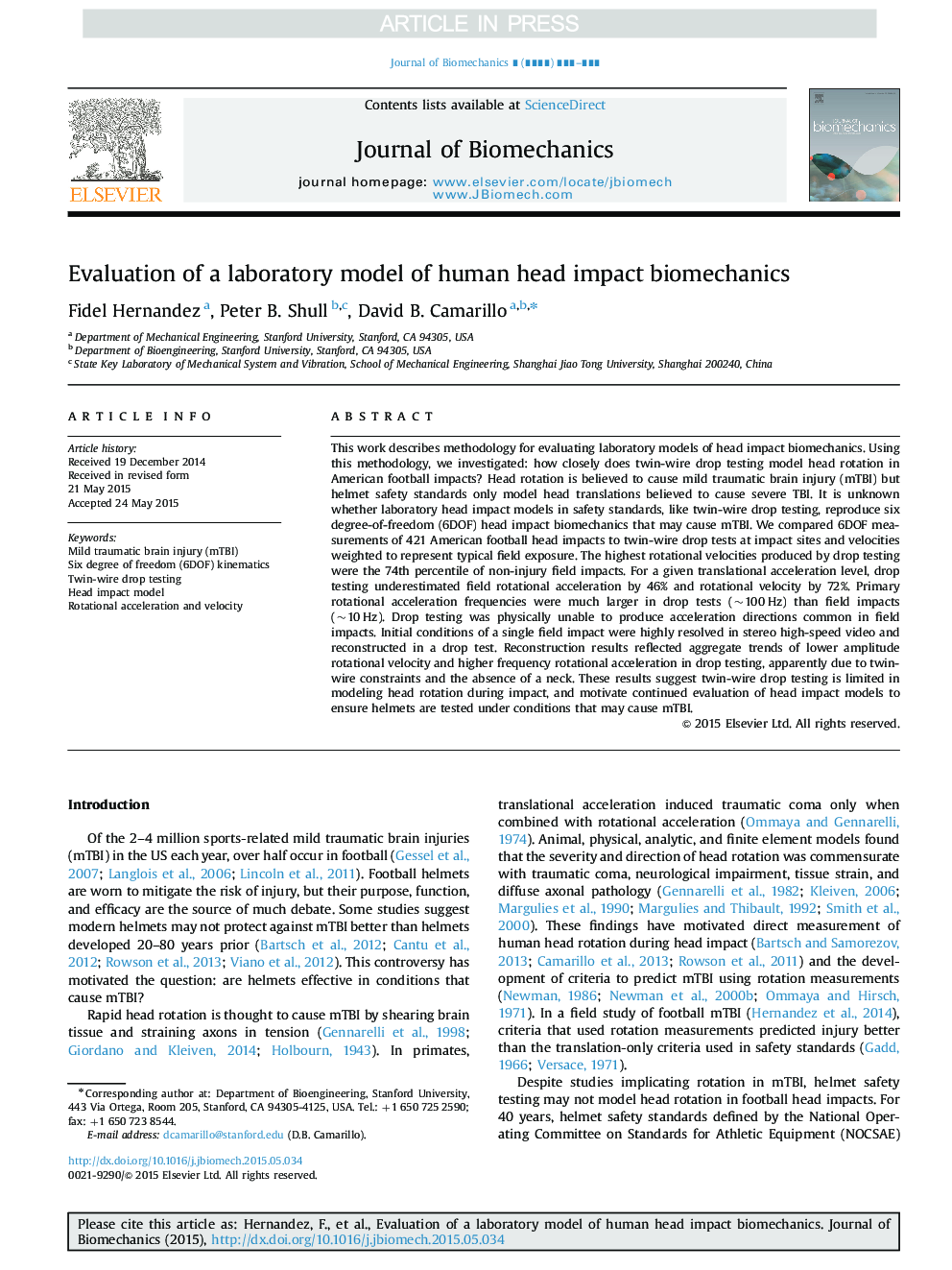| Article ID | Journal | Published Year | Pages | File Type |
|---|---|---|---|---|
| 10431332 | Journal of Biomechanics | 2015 | 9 Pages |
Abstract
This work describes methodology for evaluating laboratory models of head impact biomechanics. Using this methodology, we investigated: how closely does twin-wire drop testing model head rotation in American football impacts? Head rotation is believed to cause mild traumatic brain injury (mTBI) but helmet safety standards only model head translations believed to cause severe TBI. It is unknown whether laboratory head impact models in safety standards, like twin-wire drop testing, reproduce six degree-of-freedom (6DOF) head impact biomechanics that may cause mTBI. We compared 6DOF measurements of 421 American football head impacts to twin-wire drop tests at impact sites and velocities weighted to represent typical field exposure. The highest rotational velocities produced by drop testing were the 74th percentile of non-injury field impacts. For a given translational acceleration level, drop testing underestimated field rotational acceleration by 46% and rotational velocity by 72%. Primary rotational acceleration frequencies were much larger in drop tests (~100Â Hz) than field impacts (~10Â Hz). Drop testing was physically unable to produce acceleration directions common in field impacts. Initial conditions of a single field impact were highly resolved in stereo high-speed video and reconstructed in a drop test. Reconstruction results reflected aggregate trends of lower amplitude rotational velocity and higher frequency rotational acceleration in drop testing, apparently due to twin-wire constraints and the absence of a neck. These results suggest twin-wire drop testing is limited in modeling head rotation during impact, and motivate continued evaluation of head impact models to ensure helmets are tested under conditions that may cause mTBI.
Keywords
Related Topics
Physical Sciences and Engineering
Engineering
Biomedical Engineering
Authors
Fidel Hernandez, Peter B. Shull, David B. Camarillo,
